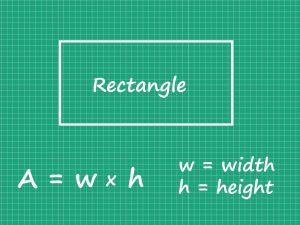Key Concepts
• Identifying the functions from the arrow diagram
• Usage of tables to identifying functions
• Interpretation of Functions
Introduction:
- In this chapter, we will learn to identify the functions from the arrow diagrams.
- Use tables to identify functions and interpretation of functions in the given scenario.
In the earlier chapter, we learned about functions and relations.
What is a Set?
A set is a collection of distinct or well-defined members or elements.
For example,
{a, b, c, …, x, y, z} is a set of alphabet letters.
What are Ordered-pair Numbers?
These are numbers that go hand in hand.
For example, (7, 9) is an ordered-pair number whereby the numbers 7 and 9 are the first and second elements, respectively.
What is the Relation?
A relation is a subset of the Cartesian product. In other words, we can define a relation as a bunch of ordered pairs.
Real-life relations:
(Brother, sister)
(Father, son)
(Teacher, student)
What is a Function?
A function is a relation that describes that there should be only one output for each input.
3.1 Understand Relations and Functions:
In many naturally occurring phenomena, two variables may be linked by some type of relationship. For instance, an archeologist finds the bones of a woman at an excavation site. One of the bones is a femur. The femur is the large bone in the thigh attached to the knee and hip.
The following table shows a correspondence between the length of a woman’s femur and her height.
| Length of Femur(cm) X | Height(in.) y | Ordered Pair |
| 45.5 | 65.5 | → (45.5, 65.5) |
| 48.2 | 68.0 | → (48.2, 68.0) |
| 41.8 | 62.2 | → (41.8, 62.2) |
| 46.0 | 66.0 | → (46.0, 66.0) |
| 50.4 | 70.0 | → (50.4, 70.0) |
For example, the following table depicts five states in the United States and the corresponding number of representatives in the House of Representatives as of July 2005.
| State X | Number of Representatives Y |
| Alabama | 7 |
| California | 53 |
| Colorado | 7 |
| Florida | 25 |
| Kansas | 4 |
These data define a relation:
{(Alabama, 7), (California, 53), (Colorado, 7), (Florida, 25), (Kansas, 4)}
3.1.1 Identify Functions with Arrow Diagrams
Jeo needs to advertise his company. He considers several different brochures of different side lengths and areas.

Step 1: Organize the given data using ordered pairs.
| Input | output |
| Side Length | Area |
| 4 | 24 |
| 5 | 35 |
| 6 | 42 |
| 7 | 49 |
| 9 | 72 |
Step 2: Match each input value to its output value by using an arrow diagram

In this example, each input is assigned exactly one output. So, the relation is a function.
3.1.2 Use Tables to Identify Functions
Jeo uses a table to record the sales of his products per week.
| Week (x) | Sales (y) |
| 1 | 100 |
| 2 | 116 |
| 3 | 125 |
| 4 | 94 |
| 5 | 116 |
To determine whether this relation is a function or not, we need to find whether each input has exactly one output or not.
If we observe the values, week 2 and week 5 have the same number of sales.
Hence, this relation is not a function.
Let us see another example,
Look at the below table
| X | y |
| -3 | 7 |
| -1 | 5 |
| 0 | -2 |
| 5 | 9 |
| 5 | 3 |
Since we have repetitions or duplicates of x-values with different y-values, then this relation ceases to be a function.
Let us see another example,
Look at the below table
| X | Y |
| -2 | 0 |
| -1 | -2 |
| 0 | 3 |
| 4 | -1 |
| 5 | -3 |
This relation is definitely a function because every x-value is unique and is associated with only one value of y.
3.1.3 Interpretation of Functions
Jeo goes for a vacation trip and boards in a hotel
The room charges are displayed as follows:
| Days | Charge ($) |
| Upto 1 day | $28 |
| Upto 2 days | $54 |
| Upto 3 days | $80 |
| Upto 4 days | $100 |
| Upto 5 days | $120 |
- Is the cost to stay a function? Explain.
The charges are different for the number of days.
So, the cost to stay is a function.
- If Jeo wants to stay for more than 5 days, should Jeo expect to pay more than $120?
Yes, Jeo needs to pay more than $120.
Exercise:
1. Which of the following arrow diagrams (a) and (b) represent functions? If one does not represent a function, explain why not.

2. Which of the following are functions from x to y? Assuming that the entire set of ordered pairs is given.
(a) {(1, 6), (2, 6), (3, 4), (4, 5)}
(b) {((1, 4),(5, 1),(5, 2),(7, 9)}
3. Check if the following ordered pairs are functions:
- W= {(1, 2), (2, 3), (3, 4), (4, 5)
- Y = {(1, 6), (2, 5), (1, 9), (4, 3)}
4. Look at the table below and identify whether it is a function or not? Explain.

5. Is the mapping diagram a relation or function? Explain

6. State whether each of the following relations represents a function or not.

7. State whether each of the following relations represents a function or not.

8. The table gives a relation between a person’s age and the person’s maximum recommended heart rate

a. What is the domain?
b. What is the range?
c. The range element 200 corresponds to what element in the domain?
d. Complete the ordered pair: (50, )
e. Complete the ordered pair: ( , 190)
9. Write the relation as a set of ordered pairs

10. Write the relation as a set of ordered pairs

What have we learned:
• Relations
• Functions
• Identifying functions with arrow diagrams
• Using tables to identify functions
• Interpreting functions in the given scenario.
Concept Map:

Related topics
Addition and Multiplication Using Counters & Bar-Diagrams
Introduction: We can find the solution to the word problem by solving it. Here, in this topic, we can use 3 methods to find the solution. 1. Add using counters 2. Use factors to get the product 3. Write equations to find the unknown. Addition Equation: 8+8+8 =? Multiplication equation: 3×8=? Example 1: Andrew has […]
Read More >>Dilation: Definitions, Characteristics, and Similarities
Understanding Dilation A dilation is a transformation that produces an image that is of the same shape and different sizes. Dilation that creates a larger image is called enlargement. Describing Dilation Dilation of Scale Factor 2 The following figure undergoes a dilation with a scale factor of 2 giving an image A’ (2, 4), B’ […]
Read More >>How to Write and Interpret Numerical Expressions?
Write numerical expressions What is the Meaning of Numerical Expression? A numerical expression is a combination of numbers and integers using basic operations such as addition, subtraction, multiplication, or division. The word PEMDAS stands for: P → Parentheses E → Exponents M → Multiplication D → Division A → Addition S → Subtraction Some examples […]
Read More >>System of Linear Inequalities and Equations
Introduction: Systems of Linear Inequalities: A system of linear inequalities is a set of two or more linear inequalities in the same variables. The following example illustrates this, y < x + 2…………..Inequality 1 y ≥ 2x − 1…………Inequality 2 Solution of a System of Linear Inequalities: A solution of a system of linear inequalities […]
Read More >>Other topics







Comments: